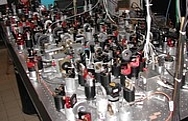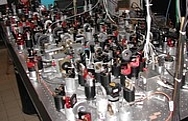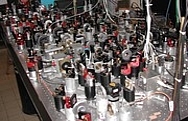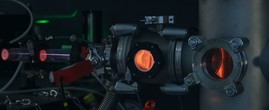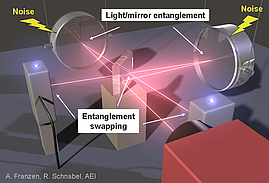Posted on Youtube.com
List of Research Groups
- Theoretical Quantum Optics
- Macroscopic Quantum Objects
- Theoretical Physics - Macroscopic Quantum Objects
- Trapped-Ion Quantum Engineering
- Molecular Quantum Gases
- Condensed Matter Physics with Cold Gases
- Quantum Engineering of Optical Pulses
- Non-Classical States of Matter
Overview
The special properties of laser light form the basis of a broad range of modern experimental methods. For example the application of laser allows us to directly manipulate internal degrees of freedom of atomic and molecular structures and makes measurements at the quantum level possible. Laser interferometers are increasingly being used in high-precision measurement technology, for example in determining extremely small length variations in the search for gravitational waves, or in precision geodesy.
In Research Area “Quantum Engineering”, QUEST combines the experimental and theoretical methods of different disciplines in order to create and investigate new control mechanisms for quantum systems. Research activities focus on the combination of quantum systems of strongly correlated atoms and solids as well as on the interaction of non-classical light fields with atomic ensembles. An additional major challenge is the study of entangled quantum states of light with a solid test mass.
The results in Research Area “Quantum Engineering” lay the groundwork for activities in Research Area Quantum Sensors, where whole new perspectives are opened up for such systems of quantum metrology. Together with the progress made in space-time research, this offers the chance to answer questions in fundamental physics and to pave the way for such future research projects as gravitational wave astronomy or novel quantum technologies.
